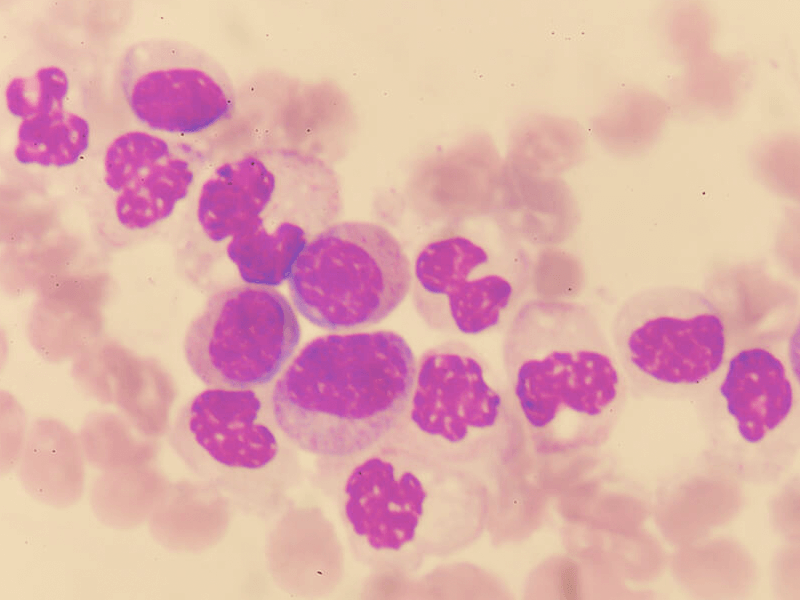Waldenström’s macroglobulinemia
On waldenstroms.info you will find educational information on Waldenström’s macroglobulinemia symptoms, pathogenesis, diagnosis and options.
You can learn more about this rare blood cancer, and explore the latest expert insights.
An introduction to Waldenström’s macroglobulinemia

Image: IgM antibody – Waldenström’s macroglobulinemia
Waldenström’s macroglobulinemia (WM; also known as lymphoplasmacytic lymphoma) is a rare, low-grade B cell lymphoproliferative malignancy characterized by small lymphocytes, IgM monoclonal gammopathy and lymphoplasmacytic marrow infiltration.1,2,3
It is named after the Swedish physician Dr. Jan Gösta Waldenström, who first identified the disease.1,3
Waldenström’s macroglobulinemia represents around 2% of all hematological malignancies.4 The reported age-adjusted incidence rate is 3.4 per million among the male population and 1.7 per million among the female population in the US and 7.3 and 4.2 per million respectively in the European standard population.5
The malignant cells in Waldenström’s macroglobulinemia are thought to originate from cells at a late stage of B-cell differentiation, deriving from B-cell arrest following somatic hypermutation in the germinal center and before terminal plasma cell differentiation.1
It is classified as a Non-Hodgkin Lymphoma (NHL), and has an indolent disease course with slow progression.2 It is generally a disease of the elderly, and the cause of death is typically due more to comorbidities associated with advanced age than to the malignancy.1
Despite an indolent disease course, prompt treatment of Waldenström’s macroglobulinemia in symptomatic patients can be essential to address anemia, peripheral, and other symptoms, and to avoid irreparable organ damage or fatal complications (such as hyperviscosity syndrome).2,6

Image: Blood cells in Waldenström’s macroglobulinemia
Waldenström’s Macroglobulinemia

Symptoms
Learn more about the symptoms of Waldenström’s macroglobulinemia.

Diagnosis
Learn more about the diagnosis of Waldenström’s macroglobulinemia.

Therapeutic options
Learn more about the therapeutic options for Waldenström’s macroglobulinemia.

Ongoing studies
Learn more about the recent clinical trials in Waldenström’s macroglobulinemia.
References
- Kaseb H, et al. Cancer, Lymphoplasmacytic Lymphoma (Waldenstrom Macroglobulinemia) 2020.
-
Mazzucchelli M, Frustaci AM, Deodato M, Cairoli R, Tedeschi A. Waldenström macroglobulinemia: An update. Mediterr J Hematol Infect Dis 2018: 10;e2018004.
-
Gertz MA, Fonseca R, Rajkumar SV. Waldenström’s Macroglobulinemia. The Oncologist 2000: 5(1);63-67.
-
Jeong S, Kong SG, Kim DJ, et al. Incidence, prevalence, mortality, and causes of death in Waldenström_ macroglobulinemia: a nationwide, population-based cohort study. BMC Cancer 2020: 20;623.
-
Kastritis E, Leblond V, Dimopoulos MA, et al. On behalf of the ESMO guidelines committee. Waldenström’s macroglobulinaemia: ESMO Clinical Practice Guidelines for diagnosis, treatment and follow-up†. Annals of Oncology 2018:29 (Supplement 4);iv41–iv50.
-
Castillo JJ, Treon SP. What is new in the treatment of Waldenstrom macroglobulinemia? Leukemia 2019: 33(11); 2555-2562.



